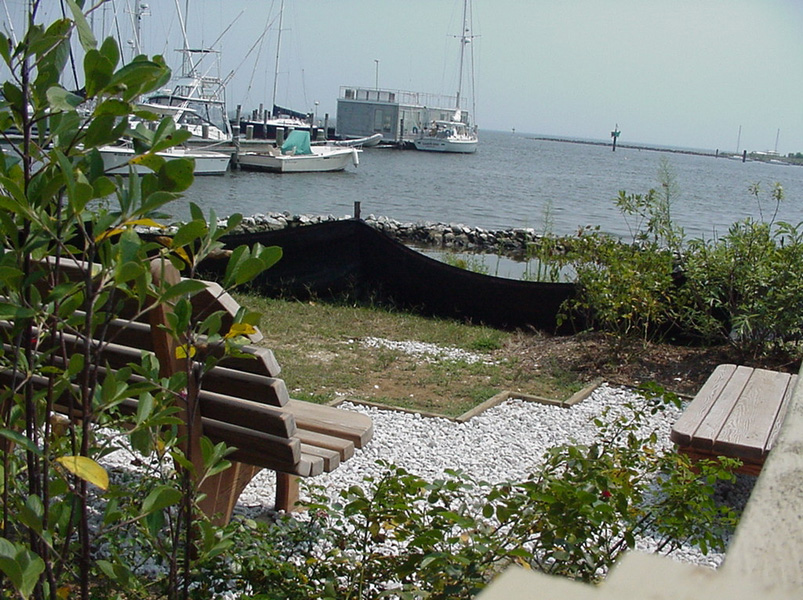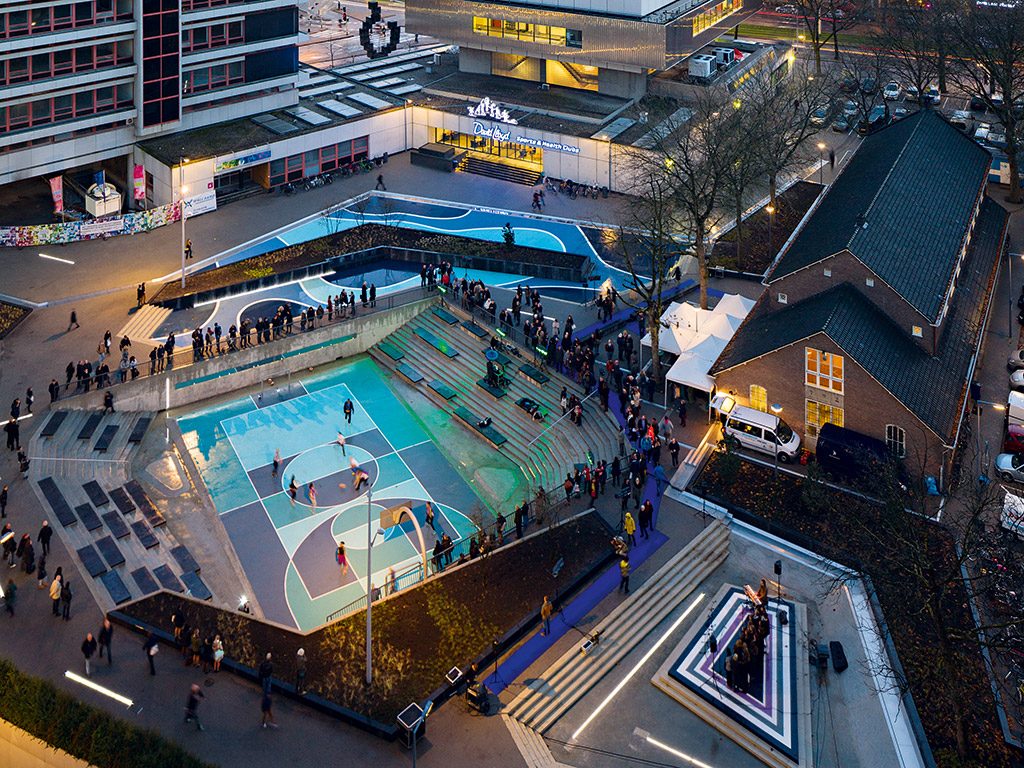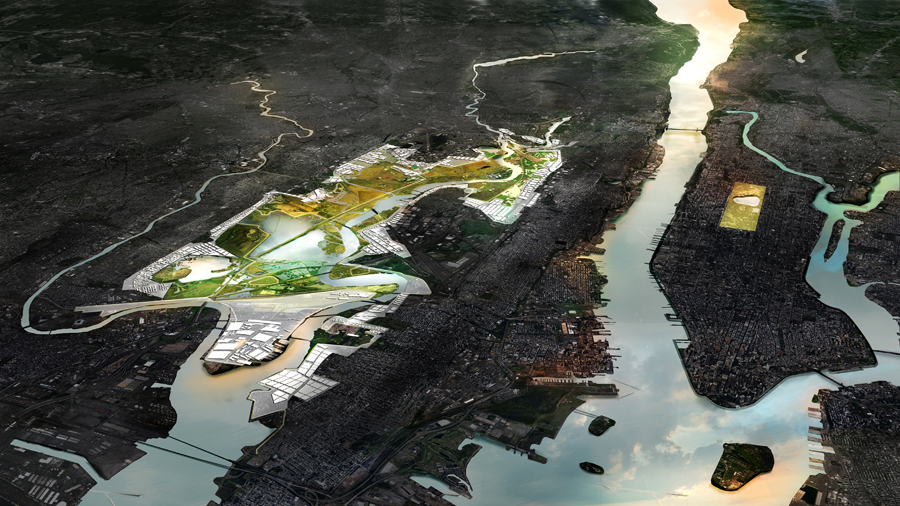Nearly all of our human settlements have sprung from nearby water supplies.
A clean and accessible water source allows new villages and cities to grow. Evolutionary biologists would argue that our modern day romance with lake and ocean-views ties back to our original search for such life-giving places. But in today’s rising sea levels and climate change fueled storms, the future of “blue spaces” depends on our relationship and response to the water around us.

Several scientists write about the calming effects of waterscapes. A marine biologist-turned-neuroscientist, Wallace Nichols, believes people will more likely care and act to conserve our oceans if they are aware and appreciate the positive feelings we have around water.
“We massively undervalue the oceans. I work with a group of veterans who use surfing and kayaking to help with PTSD. They now realize that healthy water is important to them. And they are now all ocean conservationists; they realize the ocean or river saved their lives and make sure it’s available to save their lives. Access to the “blue mind” means access to a waterway that isn’t polluted.” – Wallace Nichols
After several years of bringing neuroscientists and oceanographers together, Nichols describes how floating in water activates what scientists already know is the brain’s default resting state. When the brain has few auditory or visual distractions, it uses a different network of connections (a “default mode”) than it does when attention is focused on a task. Evidence suggests that brain systems activated during rest are important for active, internally focused psychosocial mental processing. In other words, rest improves the ability to recall personal memories, imagine the future, and feel social emotions with moral connotations. Nichols describes this state as the ‘Blue Mind’.
Another advocate, Tim Beatley, has shifted emphasis from green spaces to blue spaces. His recent book, Blue Urbanism, calls for a recognition of water surrounding many modern cities and the role these play in the health of living beings above and below water. Emerging research and design is beginning to explore theoretical accounts for why we might be attached to specific lakes and oceans, or whether our feelings extend to general waterscapes.
In the urban planning realm, ecosystem services refers to the practical benefits from trees and parks, such as tree canopy density to slow heavy rainfall, or bioswells to filter pollution and capture excessive water during floods.
In the U.S., several states are incorporating water management into urban planning, but the cultural embrace of water fluctuation is uncertain. As many as 13.1 million people in the United States will be in the path of flooding by 2100. That is three times the current at-risk population. As more and more people flock to cities, the fallout from major sea-level related disasters will increase. The key transformation, according to a Housing and Urban Development advisor, is to shift public opinion from worry to acceptance. This advisor and other top landscape designers suggest we stop fighting larger storm surges and rising sea levels with countless iterations of seawalls seeking to protect dryland, and embrace the occasional deluge with tidal zone-like flexibility.
Copenhagen, Berlin, Rotterdam and Nijmegan provide leading European examples of innovative response to water management and public space planning.
The Netherlands is a city under water. 60% of the country is below sea level but the country is a leader in design and cultural embrace of it’s urban water system. Sustainable water management systems include green roofs and flood controlling water plazas to cope with changing weather patterns and extreme downpours. Water has both life-enhancing properties and destructive potential. It needs to be constantly managed, whether too scarce or too plentiful.

In Rotterdam, climate shifts have changed the dynamics of the environment causing extreme downpours leading to flooded streets and basements occurring more often. The capacity of the city’s existing drainage systems and pumping stations has become insufficient in coping during extreme rainfall. In addition, climate change has also brought about extended periods of drought in Rotterdam. To meet the current challenges, the city is taking a holistic approach that offers innovative solutions for the collection of rainwater from roofs and other impermeable surfaces. The innovative water plazas are a cultural embrace of flow and fluctuation.
“The water square combines water storage with the improvement of the quality of urban public space. The water square can be understood as a twofold strategy. It makes money invested in water storage facilities visible and enjoyable. It also generates opportunities to create environmental quality and identity to central spaces in neighborhoods. Most of the time the water square will be dry and in use as a recreational space.” – Urbanisten
In Nijmegen, the oldest city in the Netherlands, the city is creating an artificial floodplain with an island providing new apartment and office buildings. Over 20 years ago, the city was evacuated in fear of flooding during an unprecedented rain storm. Urban planners in Nijmegen initiated a large scale digging project to create downtown plazas that will host basketball courts most of the year but double as runoff reservoirs during high-water periods. The “Room for the River” project is diverting rivers and establishing an overflow area in the heart of the city.
Copenhagen’s new design is another creative combination of green infrastructure and community engagement. A sizable open space transforms into a city pond if a massive rainfall hits. The flowerbeds fill with water, upside down umbrella sculptures capture rainfall for future watering, and water is pumped courtesy of bouncy children. Although Copenhagen does not typically capture much snowfall in the winter months, their design could likely be adapted in U.S. east coast cities struggling with the massive amount of snowmelt.
In the U.S., Philadelphia, New York and New Jersey projects are responding to water challenges with design initiatives to rival the most innovative.
Philadelphia’s Green City, Clean Waters initiative is adding 19 square miles of green space to neighborhoods while keeping 9 billion gallons of stormwater and sewage out of nearby rivers each year. Philadelphia’s plan envisions transforming the city into an oasis of rain gardens, green roofs, treescapes, and porous pavements.

“Rebuild by Design” is a New York/New Jersey design competition launched in 2014, after the aftermath of Hurricane Sandy. Six projects have since been selected and are in the process of completion. This past month, the “Resist, Delay, Store, Discharge” project announced a final proposal design, which will protect about 85 percent of the Hoboken, New Jersey’s buildings from future storms. Incorporated within the flood resistant design are green spaces, athletic fields and playgrounds. The project is still in development, and won’t be completed until 2023. In another New Jersey site, the Meadowlands project combines an urban park design with stormwater management. The New Meadowlands expands and protects a marshland within view of NYC. MeadowPark is capable of mitigating risk while at the same time providing urban park access and economic growth.
From diverting record storm surges to absorbing runoff and cooling urban areas, greenspaces will be central to protecting our cities and restoring our relationship to water. Whether the design of these spaces is driven by planning leaders or the needs and imagination of the communities they serve is still an open question. Design is a driving force, but it will be up to vulnerable communities to raise their voices and hit the drawing board to ensure the development of greenspaces that both protect the land and engender peace and well being.
